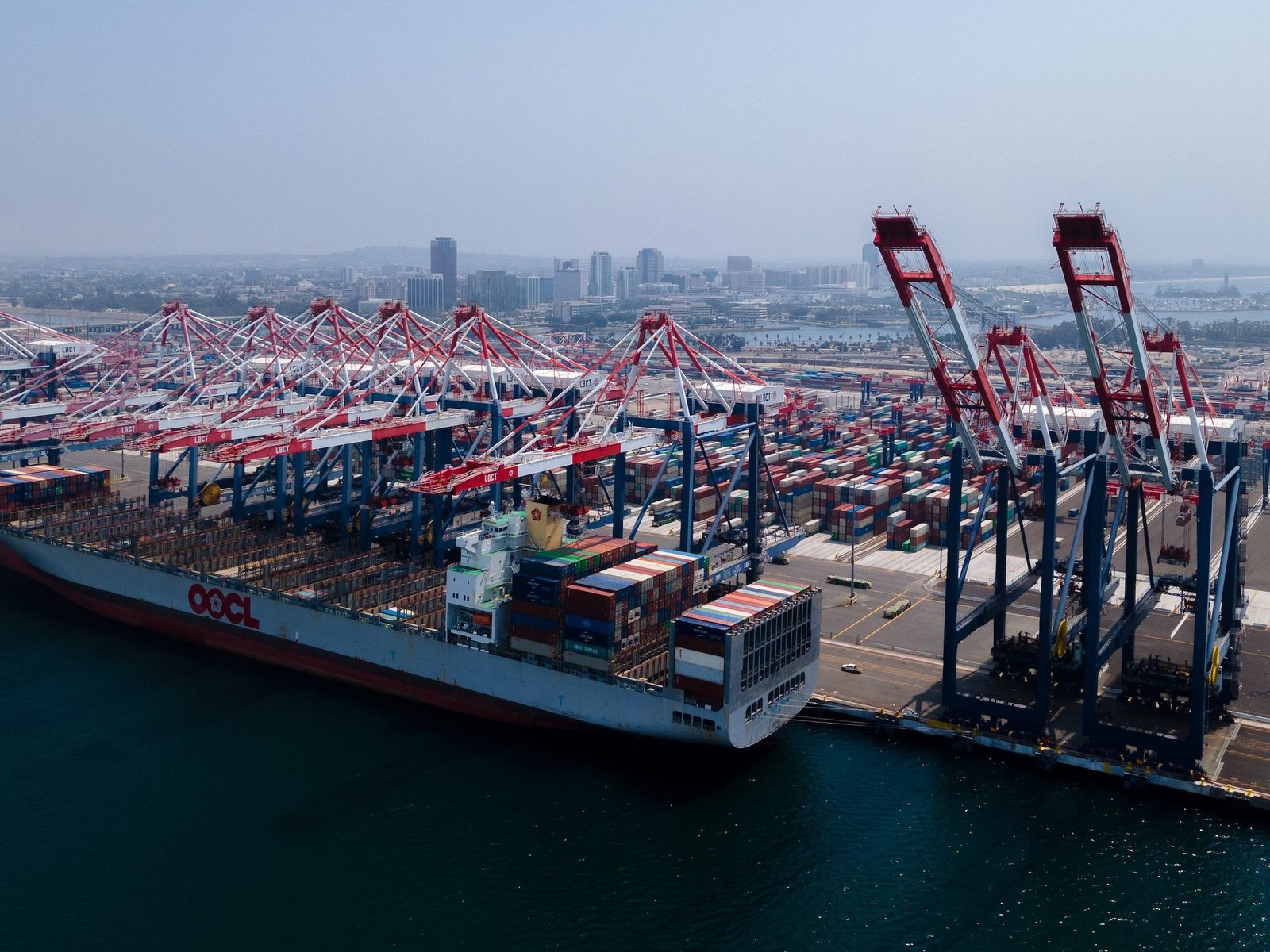
By Gavin van Marle (The Loadstar) –
Spot container freight rates on the transpacific and Asia-Europe trades continued to soften this week, with no general rate increases (GRIs) or peak season surcharges (PSSs) to halt the slide.
However, on the westbound Asia-North Europe and Asia-Mediterranean routes, carrier strategies to attract more high-paying spot cargo are predicted to lead to some restrictions on previously agreed short-term contract allocations.
One Asia-Europe forwarder told The Loadstar he had “received notifications from carriers on some sailings where allocations had been reduced to 60% of normal”.
“For us, July to August has been flat so far, however we’re still expecting short-term rates to fall.”
But he added that, based on carrier preference for higher-paying spot cargo, “we’re expecting some surcharges to come in to bring the longer-term rate levels up nearer the short term.
“$500 would be appropriate to do this if short-term rates do drop as we expect.”
As The Loadstar reported last week, Maersk has advised of a $500 PSS to be implemented on 1 August.
The World Container Index (WCI), compiled by Drewry, this week showed the spot rate on its Shanghai-Rotterdam leg as having declined 1% week on week, to finish at $3,286 per 40ft, a level and rate behaviour broadly in range with the other indices: Xeneta’s XSI showed Asia-Europe rates unchanged, at $3,406 per 40ft; while Freightos’s FBX showed a 2% increase to North Europe, at $3,572 per 40ft.
Interestingly, this meant that on the FBX the rate to North Europe is now cheaper than to the Mediterranean, confirming a diverging pricing trend Loadstar sources noticed a fortnight ago, with the FBX’s China-Mediterranean route losing 6% week on week, to stand at $3,568 per 40ft, while the WCI’s Shanghai-Genoa leg ended the week down 2%, at $3,376 per 40ft.
On transpacific trades, spot rates continued their steeper slide, with the WCI’s Shanghai-Los Angeles leg losing 5%, to $2,675 per 40ft, which, as analyst Lars Jensen noted, takes it below the level at the beginning of May and wiping off all the gains from the tariff pause.
The WCI’s Shanghai-New York leg lost 7% on the previous week, to finish at $4,210 per 40ft, while the SCFI’s Shanghai-US east coast base port lost 6%, to $3,378 per 40ft, and the FBX’s China-east coast North America route lost 10%, to end at $4,411 per 40ft.
Meanwhile, next week will see a range of carriers introduce GRIs on the transpacific trades, ranging from $1,000-$3,000 per 40ft, although with the lines still adjusting capacity to match continuing subdued demand, The Loadstar sources were pessimistic that the GRIs would increase prices.
And that view was echoed yesterday by Kuehne + Nagel CEO Stefan Paulk, who told analysts during the forwarder’s second-quarter earnings call that any peak season on the transpacific was expected to be “muted”.
However, he added: “When we talk about a muted peak season, we’re talking about the transpac into the US.
“We’re not talking about westbound to Europe. I think Europe will still see a significant growth. Asia to Europe is very resilient and the market will see good growth as well into the peak season,” he said.
The Loadstar is known at the highest levels of logistics and supply chain management as one of the best sources of influential analysis and commentary.
Sign up for gCaptain’s newsletter and never miss an update